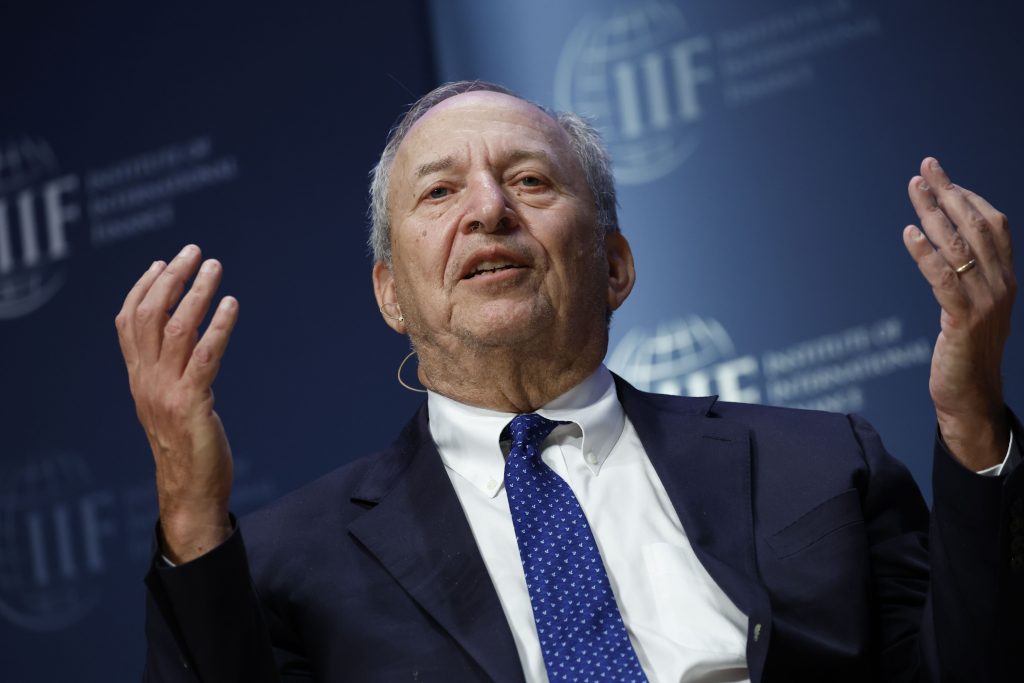Former Treasury Secretary Lawrence Summers sees US interest rates headed higher in the short-run and US taxes rising significantly in the longer run as the world’s biggest economy comes to grips with a persistent inflation problem and burgeoning government debt.
In a dinner speech at the Peterson Institute for International Economics on Tuesday, the Harvard University professor said the US seemed stuck with an underlying inflation rate of around 4.5% to 5% that’s more than double the Federal Reserve’s 2% target.
With past Fed rate increases and stress in the banking sector exerting less restraint on the economy than expected, that means the central bank will likely have to raise the federal funds rate further to bring price pressures to heel, said Summers, a paid contributor to Bloomberg TV.
“My guess is that Fed funds are going to have to get to a point 50 basis points or more ahead of where they are,” he said. Whether that’s via 25 basis point increments of a half point rise is of secondary importance, he said.
Fed policymakers have given conflicting signals on what they’re likely to do at their upcoming June 13-14 meeting, with some seeming to back a pause in their credit tightening campaign while others have indicated they’d like to push ahead.
The central bank has raised rates 5 percentage points in the past 14 months, to a target range of 5% to 5.25% for the overnight interbank federal funds rate.
Summers called the debt deal struck between President Joe Biden and House Speaker Kevin McCarthy a “reasonable outcome,” though he took issue with some of its provisions, particularly its cut in appropriations for the Internal Revenue Service.
The deal sets the course for federal spending through 2025 and will suspend the debt ceiling until January 1, 2025 — likely putting off another fight over federal borrowing authority until the middle of that year. In exchange for Republican votes for the suspension, Biden agreed to cap federal spending for the next two years.
The pact, which still has to be passed by Congress, does not change the long-run fiscal outlook very much, Summers said.
Fiscal challenge
He painted a dire picture of the challenges facing US fiscal policymakers in the years ahead, arguing that the situation is even worse than that depicted by the Congressional Budget Office.
In an update to its budget outlook in May, the CBO forecast that the US budget deficit would rise to 7.3% of gross domestic product in fiscal year 2033, in part driven by higher interest rates and increased spending on America’s aging population. The shortfall last year was 5.2% and from 1973 through 2022 it averaged 3.6%.
Summers maintained that the budget deficit could plausibly come in at 11% of GDP in 2033 under different assumptions than those made by the CBO. They include even higher interest rates, stepped-up defense spending and a continuation of the bulk of tax cuts initiated under former President Donald Trump that are set to expire.
“We have a challenge before us that is of a magnitude that is unprecedented in our own history,” he said.
It’s unrealistic to expect to close the gap through reductions in government spending and so higher taxes will be needed, according to Summers.
“The US will, over time in ways that are largely not recognized by the political process, be likely to require substantial increases in revenue,” he said.
The good news is that the US has some breathing room to tackle the problem because the country’s dynamism makes it a magnet for foreign capital, he said.
In that regard, he didn’t see the country’s fiscal outlook leading to the sort of problems for the dollar that the US experienced under former President Jimmy Carter.
“I tend to be an optimist about the dollar,” he said, arguing the alternatives – the euro, the Japanese yen and the Chinese yuan – have problems of their own.
© 2023 Bloomberg

